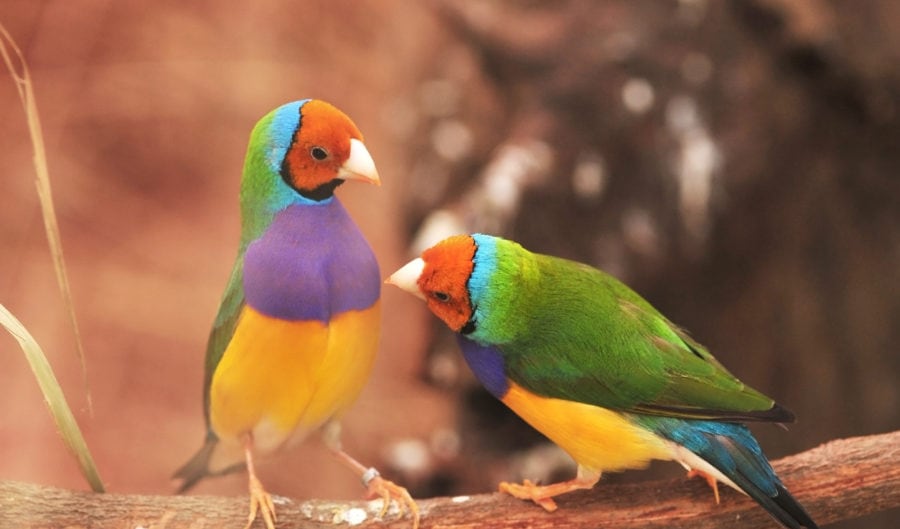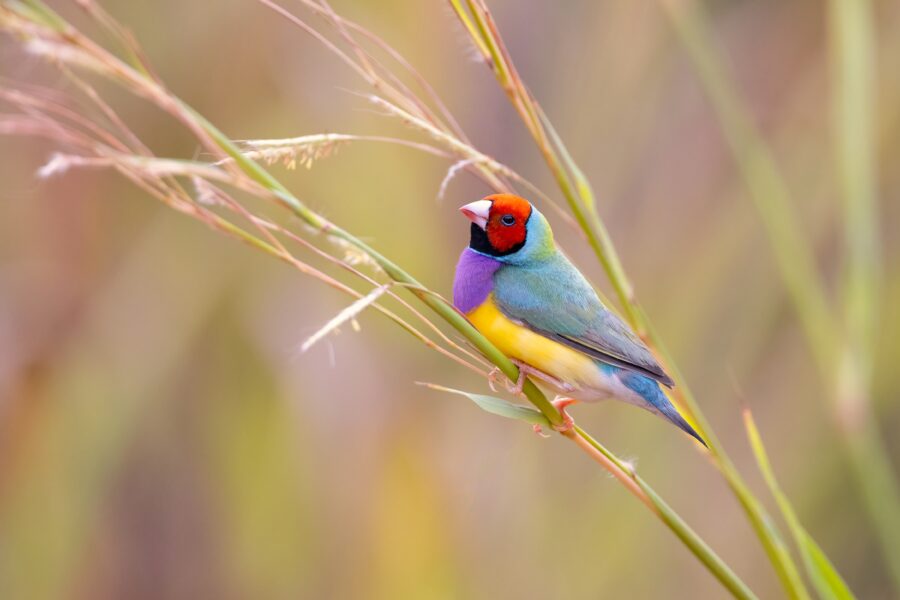The return of the Gouldians

“We were gobsmacked!” says Dr Ray Pierce, from the Queensland Gouldian Finch Study (QGFS), of his first encounter with a large flock of Queensland Gouldians.
Ray, a conservation scientist, and wildlife guide Patrick De Geest lead the QGFS, whose small band of citizen scientists is studying new-found Gouldian finch populations inland from Cairns. I felt equally stunned when, while volunteering with the QGFS, I witnessed a flock of 25. I never thought I’d see so many together at once because Gouldians had all but disappeared from Queensland, where the species is listed as endangered.
Expanding pastoralism, altered fire regimes, trapping for aviculture and air sac mites have been implicated in the Gouldian finch’s decline across Australia’s northern savannahs since the 1940s.
Happily, since 2018, QGFS volunteers have located sizeable flocks, found nests and confirmed successful breeding, none of which had been documented in Queensland for decades. By understanding why the birds are now recovering on some properties, QGFS is aiming to develop Gouldian-friendly land management guidelines.
“Good land management is key,” says Dr Don Franklin, who’s studied Gouldian finches for the Parks and Wildlife Commission of the Northern Territory, where population declines have been less extreme. Now living in Queensland, Don is well placed to make comparisons. “The fundamental problem in Queensland is that properties are smaller, have been grazed more intensively, and for longer,” he explains. “A bird can have food for 95 per cent of the time but if there’s no food for 5 per cent of the time, it can’t survive. They need to be able to chase rich patches in the landscape.”
Light grazing and relatively infrequent fire are likely key factors in creating the ideal habitat for Queensland populations. Most areas with breeding birds haven’t burnt for seven or eight years according to a 2019 QGFS report, a comparatively long time for Queensland’s savannahs.
Pondering the Gouldian finch’s future in the state, Don is cautiously optimistic. “They’re strong fliers and prolific breeders,” he says. “Their ability to recolonise is strong, if the habitat is right.”


